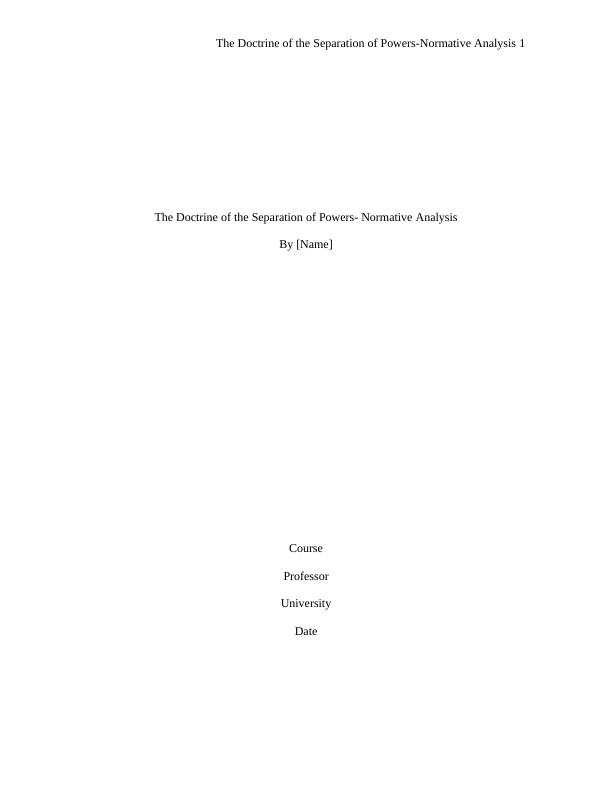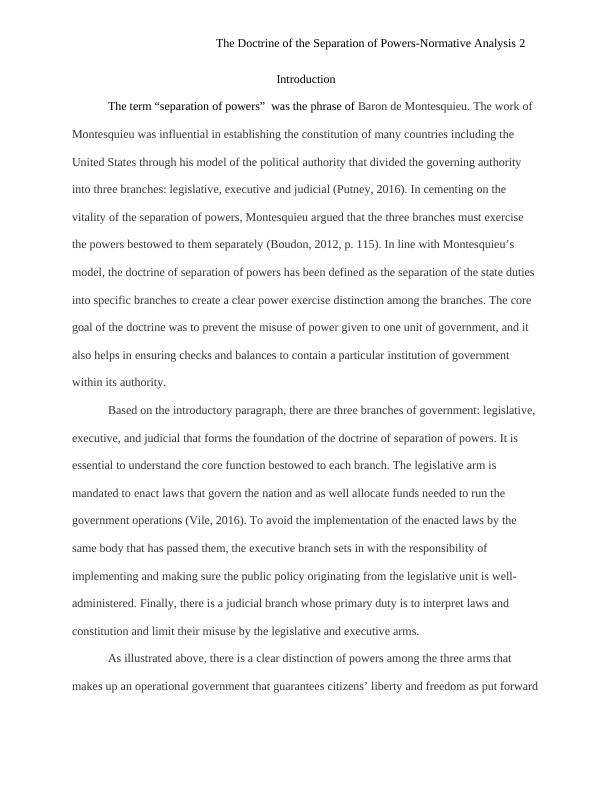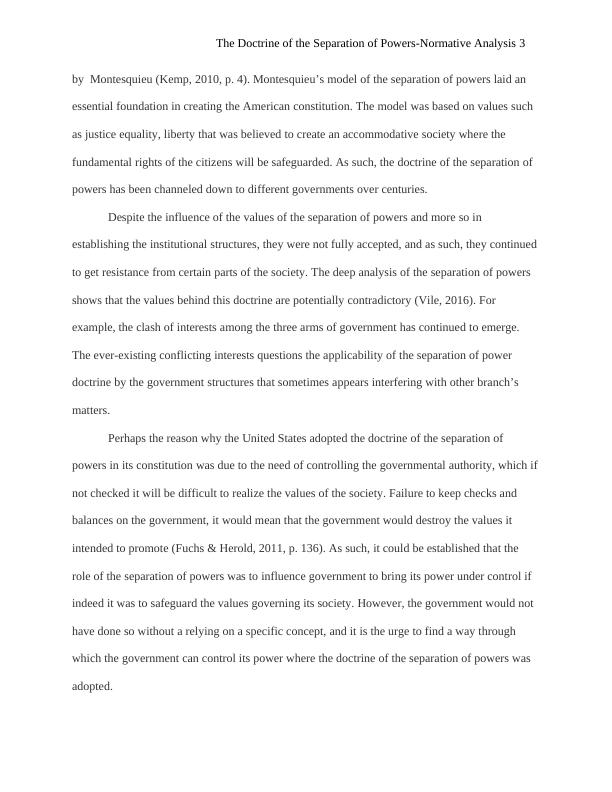The Doctrine of the Separation of Powers-Normative Analysis
8 Pages1816 Words176 Views
Added on 2023-03-31
About This Document
This article provides a normative analysis of the doctrine of separation of powers, its origins, and its impact on government structures. It explores the three branches of government and their respective roles, as well as the benefits and challenges of the doctrine. The article concludes by discussing the effectiveness of the doctrine in maintaining a balance of power and controlling government authority.
The Doctrine of the Separation of Powers-Normative Analysis
Added on 2023-03-31
ShareRelated Documents
End of preview
Want to access all the pages? Upload your documents or become a member.
Separation of Power in Singapore
|13
|3429
|172
Understanding the Doctrine of Separation of Powers in Australian Constitution
|13
|3064
|490
Separation of Powers in Singaporean Constitution
|11
|3322
|481
Separation of Powers in Australia: Extent and Sufficiency
|22
|6837
|231
Doctrine of Separation of Powers in Australia: An Analysis
|8
|1845
|169
Separation of Power of the British and U.S. System
|12
|3423
|450



